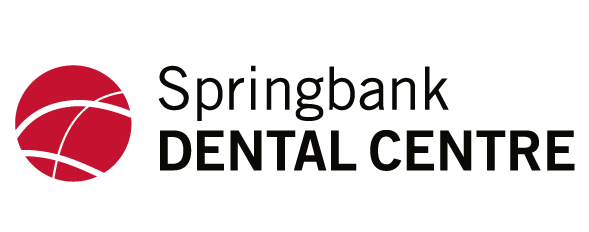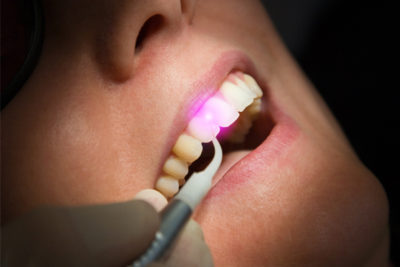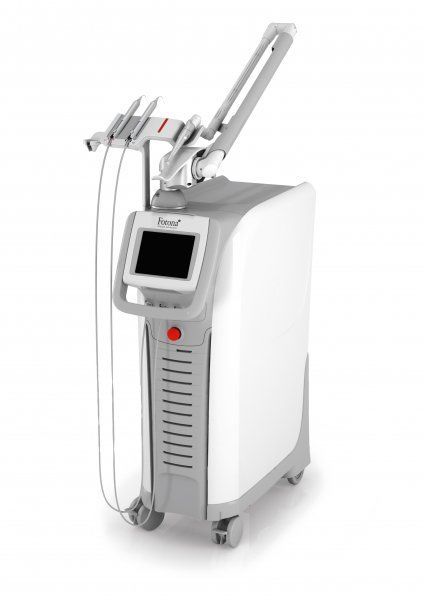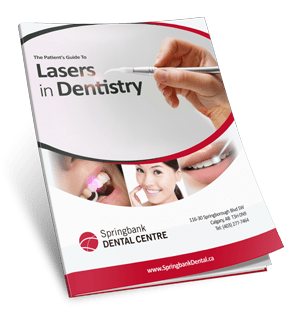Call Us Today! (403) 277-7464 NEW PATIENTS: (587) 317-9910 | 116-30 Springborough Blvd SW, CALGARY AB T3H 0N9

Laser Dentistry

Laser dentistry has superseded many traditional dentistry practices, making treatments more precise and less painful in recent years. This newer style of dentistry utilizes intense beams of light projected by a dental laser. This method can be used to perform a wide variety of treatments including, but not limited to, tooth preparation, bacterial elimination, and soft tissue shaping.
The FDA deemed laser dentistry to be safe for public usage in 1990. Since then, many dentists have incorporated dental lasers into everyday procedures – reducing bleeding, anxiety and post-treatment recovery times. The beauty and good news about dental lasers are that they damage less of the surrounding tissue than traditional techniques – which means less discomfort and pain.
- Benefits associated with laser dentistry:
- Reduced need for freezing.
- Faster healing and tissue regeneration.
- Preservation of more of the natural tooth.
- Reduced bleeding during and after treatment.
- Reduced need for stitches and sutures.
- Reduced risk of bacterial infections after procedures.
How can laser dentistry help me?

Laser dentistry is incredibly versatile and plays an important role in a growing number of common dental procedures.
Some of the ways that dental lasers can be used:
- Tooth preparation – Prior to laser dentistry, a drill would be required to prepare the tooth for a filling. Lasers can decrease or eliminate the need for drilling and freezing in today’s practice. It also successfully kills oral bacteria around the surgical site.
- Bacterial Elimination – The use of the dental laser during root canal treatment essentially eliminates all of the bacteria in the canals which is vital to a successful outcome.
- Reshaping soft tissue – Dental lasers can dissolve soft tissue to expose more of the natural tooth (crown lengthening), reshape soft tissue to make “gummy smiles” more attractive, and remove uncomfortable soft tissue folds caused by denture wear.
- Frenectomy – It can improve speech and the feeding habits of babies, children, and adults by untying the tongue.
- Tumor removal – When benign tumors have formed in the soft tissue areas of the mouth, a dental laser can completely remove them without causing pain.
- Whitening – Lasers can greatly expedite the tooth whitening process by increasing the activity of the particles in the peroxide bleaching solution.
- Biopsy – They are sometimes used to perform a biopsy on suspicious areas of soft tissue. This biopsy procedure can be performed instantly and with great precision.
How are laser procedures performed?
In order to treat different conditions, different types of dental laser have been created. Each laser uses a unique wavelength of light, which predicates its best use. The most common types of dental laser are carbon dioxide lasers and diode lasers, which are usually employed to treat soft tissue problems. The dentist will decide which type of laser is best to use after conducting X-rays and a thorough examination.
The laser beam is extremely bright, and special glasses will be provided to protect the eyes. The dentist will then direct the beam at the affected area and carefully dissolve the soft tissue, harden the filling or whiten the teeth.
The procedure will usually take less time than conventional methods, and cause far less anxiety and discomfort. At this Dental Centre, there is no extra charge for utilizing laser technology.
Please do not hesitate to call us to book a consultation in case you have any questions about laser dentistry.

Copyright 2025 Springbank Dental Centre & Dental Growth Strategies | All Rights Reserved | Powered by Dental Growth Strategies

